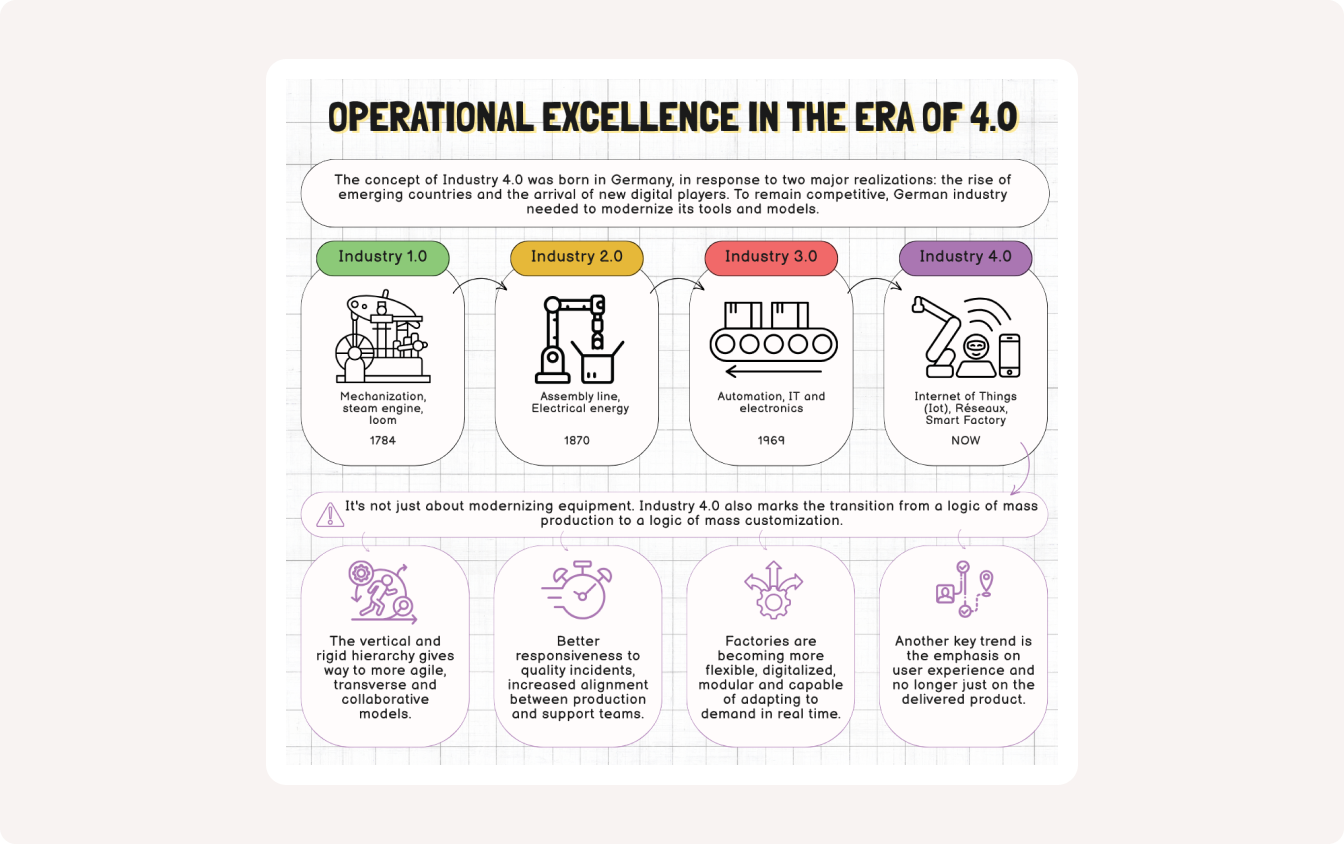Lean
- 8 minute read
Essential steps to implement Hoshin Kanri for effective strategic alignment within your organization.

We often hear about Industry 4.0, “smart factories,” or the factory of the future. But what does this transformation really mean?
The concept of Industry 4.0 was born in Germany, in response to two major challenges: the rise of emerging economies and the emergence of new digital-native players. To stay competitive, German industry had to modernize both its tools and its business models.
Why “4.0”? Because it marks the fourth industrial revolution, following mechanization, electrification, and automation. Other countries followed, each with their own terminology.
But this evolution is often misunderstood. Too often reduced to a stack of technologies (IoT, cobots, augmented reality, additive manufacturing…), Industry 4.0 is above all a paradigm shift. It transforms not only tools, but also the way we produce, collaborate, and manage performance—within a Lean management approach .
This is not just about modernizing equipment. Industry 4.0 also marks a transition from mass production to mass customization.
Factories are becoming more flexible, digitalized, and modular—often organized in small, autonomous cells able to adapt in real time to demand. The goal is no longer to maximize output, but to deliver the right product, at the right time, for the right customer, with minimal waste.
In this context, leading companies are implementing integrated digital visual management systems, accessible at all levels of the organization. These environments help align strategy and execution by making KPIs, issues, action plans, and short-term priorities visible.
This is exactly what’s happening at several Sanofi industrial sites: teams use digital Obeyas to drive ramp-up performance, coordinate support functions, and quickly respond to production disruptions.
The 4.0 revolution also deeply transforms traditional organizational models inherited from Taylorism. Rigid vertical hierarchies are being replaced by more agile, cross-functional, and collaborative structures.
Decision-making becomes faster, more local, and better informed. Daily frontline meetings (TOP 5 / 15 / 30 style) are evolving into structured rituals that bring performance to life every day.
At ID Logistics, management routines have been entirely redesigned by digitalizing SQCDP rituals .
The result: faster responses to quality issues, stronger alignment between production and support teams, and continuous learning from solved problems.
Another key trend: the focus is shifting from delivered product to user experience. In R&D or product teams, digital visual management rooms bring together customer feedback, technical roadmaps, project decisions, and industrial constraints—all in one shared space.
Contrary to common belief, Industry 4.0 is not some futuristic promise. It is already being deployed across many industrial sites in France and around the world.
Here are a few real-world examples:
In summary, Industry 4.0 is not just a stack of new technologies—it represents a genuine paradigm shift. It changes the way we produce, collaborate, and steer performance.
And the examples of Sanofi, ID Logistics, and the energy sector all confirm it: the real disruption does not come from the tools themselves, but from how we use them together. This is the natural evolution from Lean Manufacturing to Lean Enterprise.
